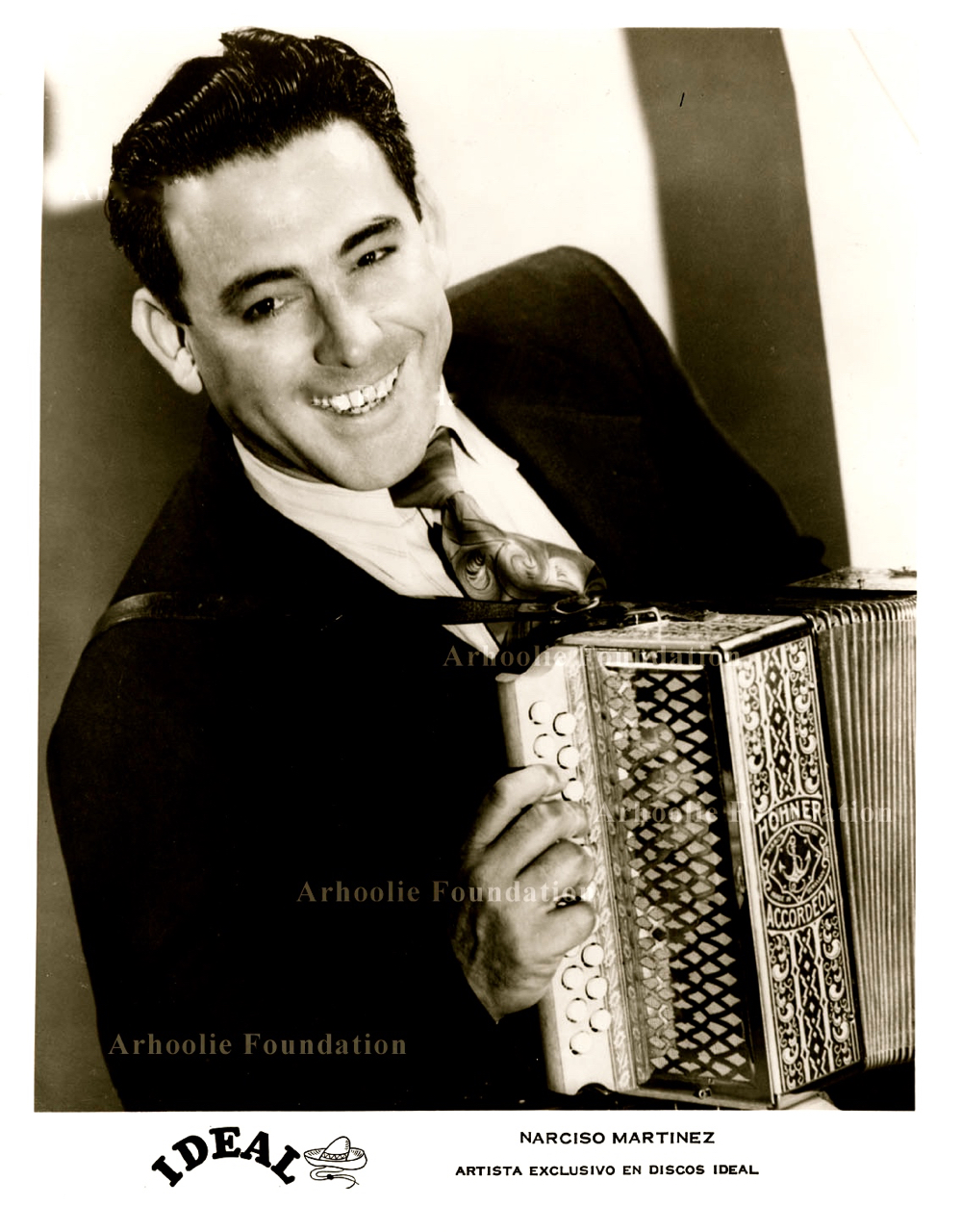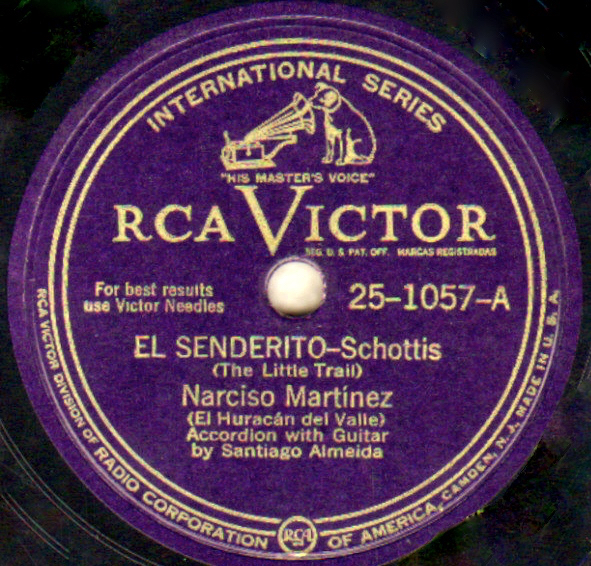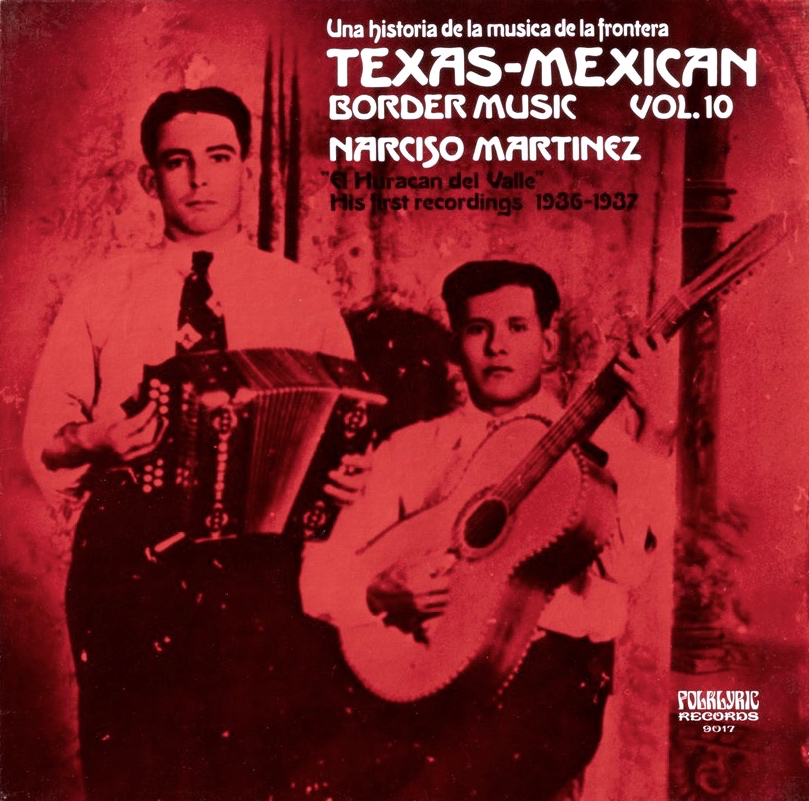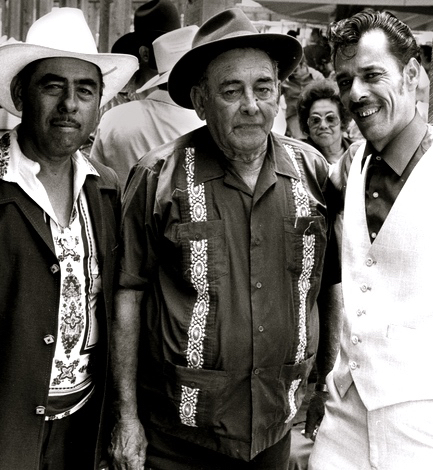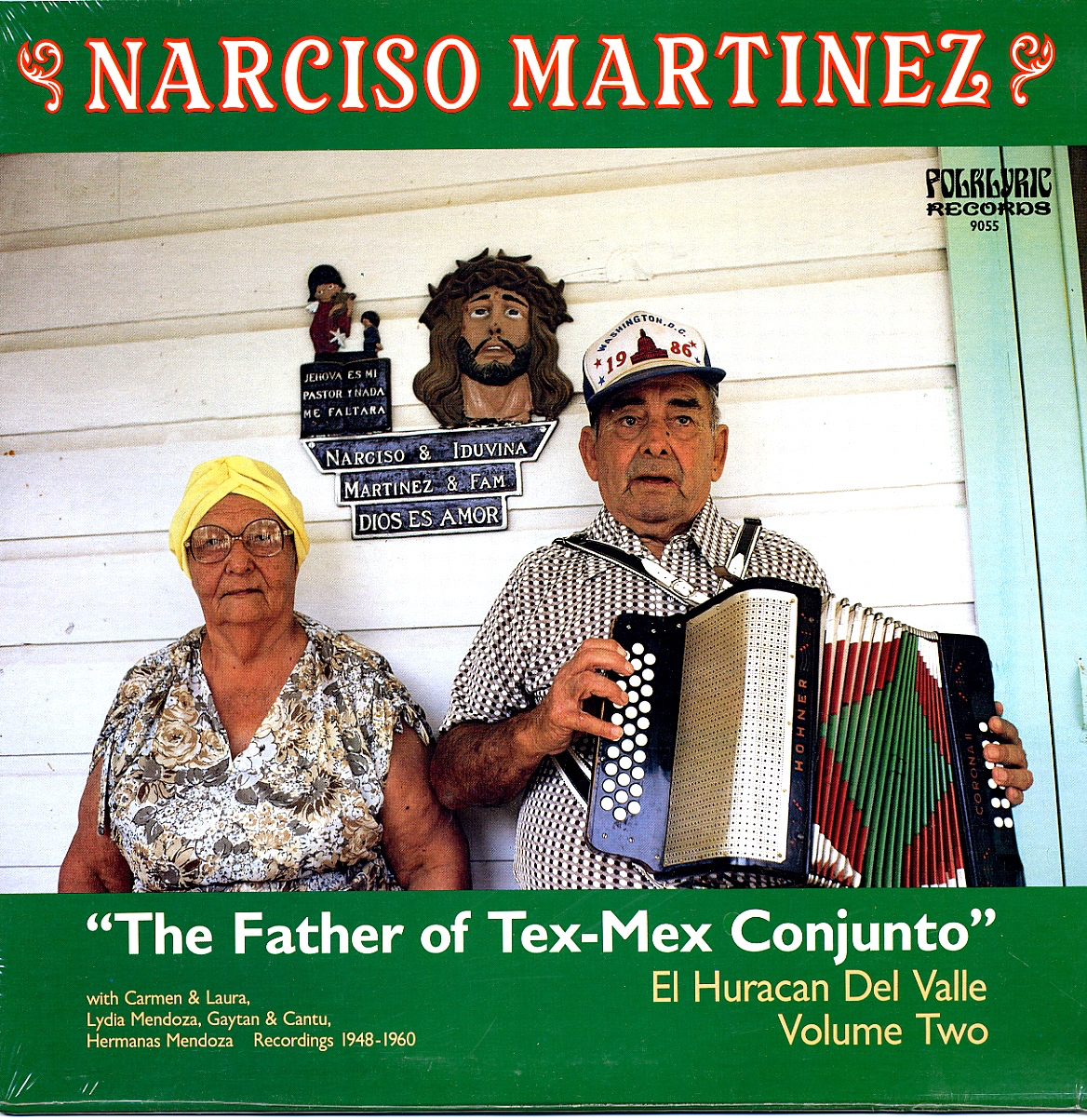Guest Blog: The Norteño Accordion, Part 1
EDITOR’S NOTE: One of the first articles I wrote as a music critic for the Los Angeles Times was about a documentary that told the story of how the accordion became a lead instrument in Mexican-American music. Titled Accordion Dreams, this 2001 PBS production traces the history of the instrument from its German roots to its adoption by Tex-Mex musicians along the U.S.-Mexico border and its evolution in the hands of experimental young players today. The accordion is a showcase instrument in two closely related genres that are central to the Frontera Collection: norteño and conjunto.
Over the years, accordion music from the collection has been featured on compilation albums released by Arhoolie Records, the label launched by Frontera Collection founder Chris Strachwitz. One such album, for example, focused on the music of Narciso Martinez—a.k.a. El Huracán del Valle—who is considered the genre’s most influential instrumentalist. Martinez is also known as the father of conjunto music, due to his novel style of playing, which Strachwitz discusses in my earlier blog about conjunto music.Arhoolie also released a series of three compilations, these by various artists, focused specifically on the “Norteño Acordeon.” They are Part 1: “The First Recordings:” Part 2: “San Antonio, The 1940’s and 50’s;” and Part 3: “South Texas and Monterrey, N.L., The 1940s and 50s.” Each album was issued with liner notes by Strachwitz, revealing his broad knowledge of the music and first-hand experience with many of the artists. We are reprinting those liner notes as a series, with links to examples from the Frontera Collection. (The notes have been updated for clarity and accuracy, in the case, for example, of artists who have since passed away.) We begin with Part 1, released in 1975, in which Strachwitz touches on the origins of the accordion in Germany and discusses the songs and artists included in this first compilation. The notes also feature a brief sidebar written by musician Ry Cooder, who explains the workings of the button accordion (also known as the diatonic accordion), which is favored by Tex-Mex musicians over the piano accordion. Learn why in the Part 1 liner notes below. ̶ Agustín Gurza
 The first accordion was built in 1822 by Friedrich Buschmann (1805 –1864), a German musical instrument-maker also credited with inventing the harmonica. He called it a Ziehharmonika (zieh in German means pull). However it was Cyrill Damian who in 1829 in Vienna, Austria, began to mass-produce and adopt the name accordion for these instruments. (In Spanish, the name of the instrument is spelled acordeón.)
The first accordion was built in 1822 by Friedrich Buschmann (1805 –1864), a German musical instrument-maker also credited with inventing the harmonica. He called it a Ziehharmonika (zieh in German means pull). However it was Cyrill Damian who in 1829 in Vienna, Austria, began to mass-produce and adopt the name accordion for these instruments. (In Spanish, the name of the instrument is spelled acordeón.)
I found the first written report of the accordion being used along the border in John Peavey’s Echoes from the Rio Grande Valley (Springman-King, 1963, page 27). He describes an open-air dance about 1905 where a band consisting of fiddle, accordion, and drum supplied the music. Most people told me that the instrument was brought into the area by German and Bohemian settlers who were also active in the construction of mines and railroads in Northern Mexico. Some of the tunes heard on this compilation may also be of central European origin.
The Musicians
Among the first accordionists to become popular in South Texas via phonograph records were Jose Rodriguez and Bruno Villareal. Both came from San Benito. Bruno Villareal, almost blind, was labeled on his records “El Azote del Valle” (the Whip of the Valley) and is today still remembered by people as far north as Amarillo, Texas, playing in the streets with a tin cup attached to his piano accordion, which he used from the late 1930s onward. “La Cascada,” one of two Villareal tracks heard on this compilation. Is a mazurka recorded in San Antonio with bajo sexto and tambora on January 31, 1935.
While Bruno was an itinerant street musician, Jose Rodriguez played primarily for dancing. Fellow musician Narciso Martinez recalled attending a dance where Jose Rodriguez, known as “La Bamba,” was playing. Upon spotting Narciso, Jose stopped the dance and told Narciso that he did not want him around because he wanted to guard his tunes for his own recording sessions and accused Narciso of “stealing” his material. (More on Martinez, a key figure in the music, in a moment.)
Jesus Casiano, another squeezebox player heard on this album, lived in San Antonio where he continued to record for Rio Records in the 1950s. Known as “El Gallito” (The Little Rooster), he made polkas his specialty, such as the one included in this compilation, “La Bien Polviada.”
Lolo Cavazos, who was born January 5, 1906 in Matamoros, Tamaulipas, and later settled in Alice, Texas, recalls that accordion music was popular since he was a little boy. He believes norteño music got started in the Rio Grande Valley. Self-taught, he played a two-row instrument and in the 1950s recorded for the Ideal label.
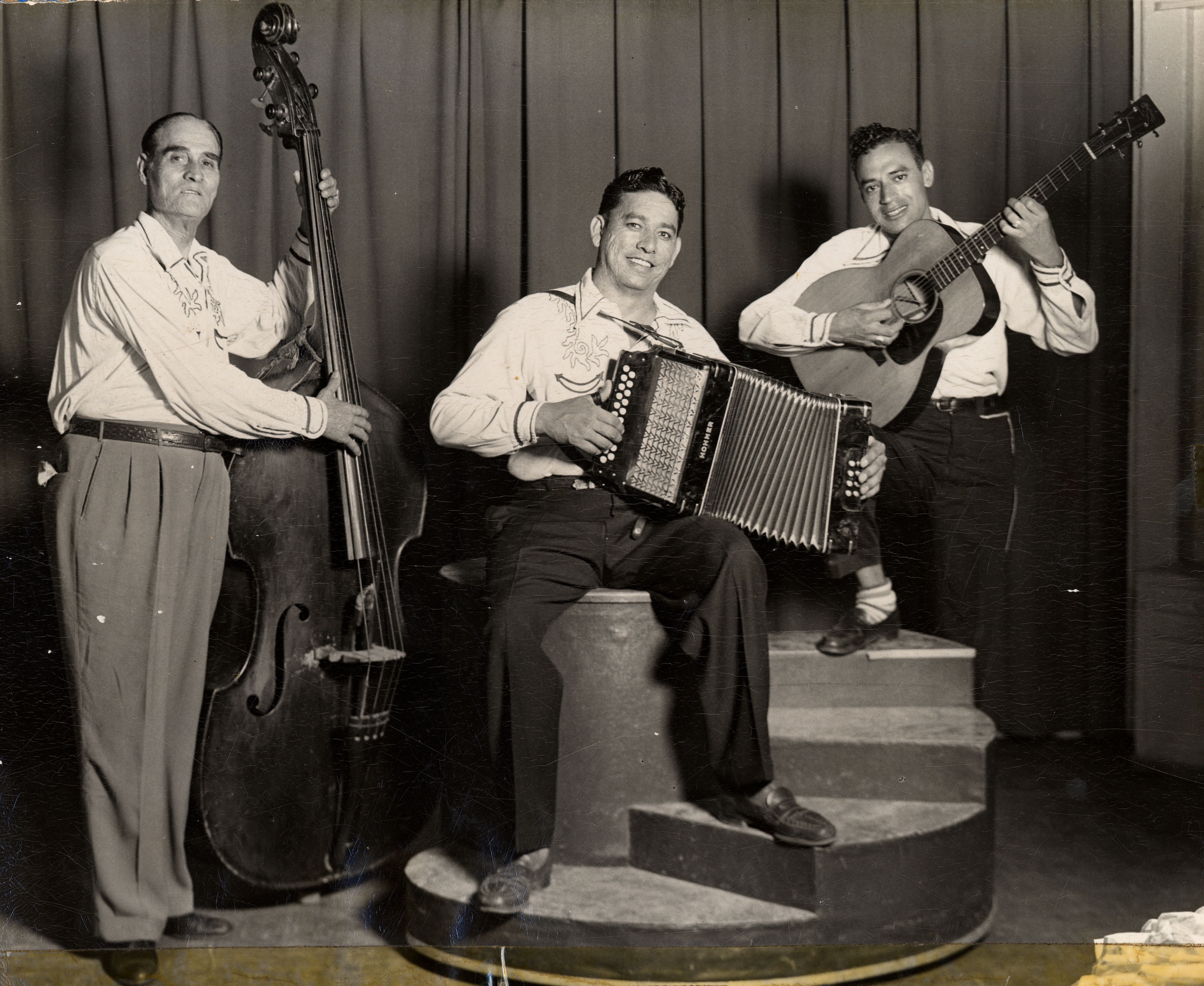 The most important and influential accordionist in the San Antonio area during this period of the first recordings was Santiago Jimenez Sr. (1913 – 1984). Born in San Antonio, Santiago was labeled “El Flaco” (the Skinny One) on his first records, a nickname later inherited by his son. He started to play accordion about 1923 and learned most of his early tunes from his father, Patricio Jimenez. About 1935 Santiago bought his first two-row accordion at a pawnshop and within a year was broadcasting daily over the radio. Thomas Acuña, music store owner and talent scout, heard these programs and asked Santiago to record. The pay was only $7 per record and no royalties but via his records and radio programs Santiago became more and more popular. During World War II the major record companies stopped recording regional music, giving rise to many small firms in the late ‘40s. Santiago was one of the first to record for Globe and Imperial and was especially successful with “Viva Seguin” and “La Piedrera,” which have become polka standards in South Texas. In “La Nopalera,” a polka recorded in San Antonio in September 1938, he is accompanied on bass by Santiago Morales.
The most important and influential accordionist in the San Antonio area during this period of the first recordings was Santiago Jimenez Sr. (1913 – 1984). Born in San Antonio, Santiago was labeled “El Flaco” (the Skinny One) on his first records, a nickname later inherited by his son. He started to play accordion about 1923 and learned most of his early tunes from his father, Patricio Jimenez. About 1935 Santiago bought his first two-row accordion at a pawnshop and within a year was broadcasting daily over the radio. Thomas Acuña, music store owner and talent scout, heard these programs and asked Santiago to record. The pay was only $7 per record and no royalties but via his records and radio programs Santiago became more and more popular. During World War II the major record companies stopped recording regional music, giving rise to many small firms in the late ‘40s. Santiago was one of the first to record for Globe and Imperial and was especially successful with “Viva Seguin” and “La Piedrera,” which have become polka standards in South Texas. In “La Nopalera,” a polka recorded in San Antonio in September 1938, he is accompanied on bass by Santiago Morales.
Santiago used to get his accordions tuned and repaired by the Stark Brothers, both immigrants from Germany during the 1920s. Chris Stark vividly recalls how Mr. Jimenez “was always trying to do something different” and asked that accordions which came from the factory in the key of G or C be put into a lower key like E, which Santiago preferred. Santiago Jimenez lived in Dallas in the mid-1970s (at  the time of this writing), but still played from time to time especially when visiting his children, particularly Leonardo, who gained fame by his adopted nickname, Flaco Jimenez. The musical patriarch’s other son Santiago Jimenez, Jr., known as Jimmy, plays very much in his father’s tradition and most of the other children play as well. The delightful Jimenez accordion sound will live on, and Flaco’s little boy has already mastered “La Piedrera!”
the time of this writing), but still played from time to time especially when visiting his children, particularly Leonardo, who gained fame by his adopted nickname, Flaco Jimenez. The musical patriarch’s other son Santiago Jimenez, Jr., known as Jimmy, plays very much in his father’s tradition and most of the other children play as well. The delightful Jimenez accordion sound will live on, and Flaco’s little boy has already mastered “La Piedrera!”
Finally the Father of Norteño music, Narciso Martinez, was no doubt the most popular accordionist from the 1930s to the ‘50s. Born October 29, 1911 in Reynosa, Tamaulipas, Narciso grew up in the Rio Grande Valley and became known as “El Huracán del Valle” once he started to record in 1935. Besides being a superb musician, Narciso emphasized the treble end of the accordion, leaving the bass part to his bajo sexto player. In the 1940s when Ideal Records started, Narciso became their primary artist who not only recorded prolifically on his own but also helped create the Norteño style: two voices backed by accordion. The singers were Carmen and Laura and their records were very popular and influential. On “Flor Marchita,” a schotis, Narciso is accompanied by Santiago Almeida on guitar or bajo sexto and Santiago Morales on bass. It was recorded in San Antonio on September 13, 1937. During the 1970s when he was in his 60s, Narciso continued to play for dances and parties while working as an animal keeper at the Brownsville zoo.
– Chris Strachwitz, 1975
The Button Accordion
The diatonic accordion has been popular with Border musicians for probably over 70 years, and most of the instruments used in the Border area have been made by the German Hohner company. Hohner built their diatonic button accordions simply and inexpensively to popularize the instrument in America. The instrument heard on most of these selections (except the first two items which feature probably a one-row instrument) has two rows of treble buttons tuned in two major scales, such as G/C or C/F, and eight bass buttons, four for each key. The button accordion works like a harmonica in that each button has a two-note value, one pushing and one pulling, so that a scale run is played by working the bellows in and out, unlike the piano accordion, which plays any group of notes in one direction. “Diatonic” indicates that the instrument does not have regular sharps and flats, as does the piano accordion, but it does have one flat key per row at the low end of the treble side.
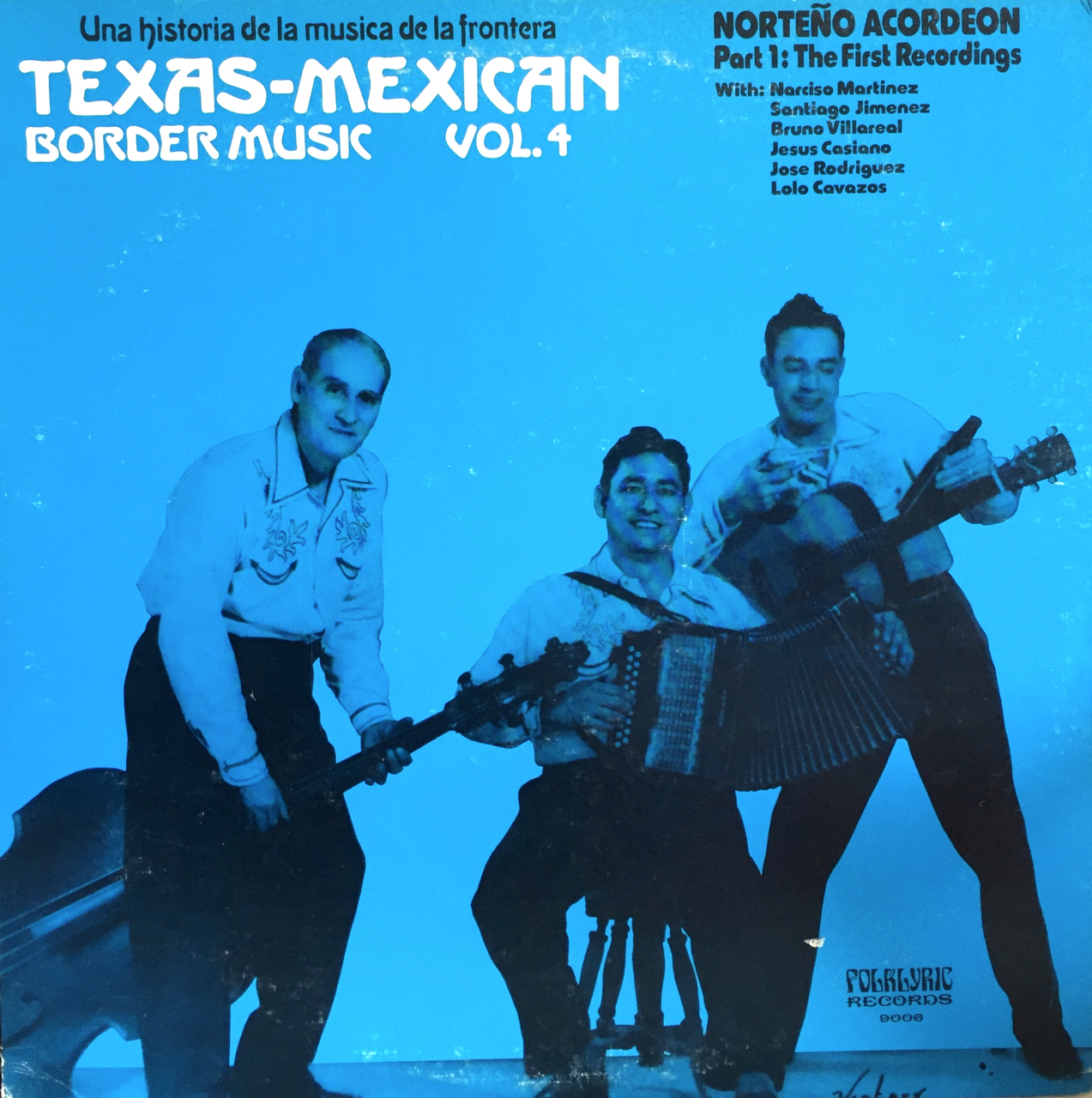 These accordions are double reed, that is, with each note one reed vibrates at standard pitch and the other about one fourth tone sharp. The dissonance produces a vibrato effect that gives the button accordion its unique sweetness and delicacy. Two adjacent buttons played together almost always produce a pleasant third interval, which is the basic harmony of all Mexican singing. No wonder this instrument became popular with the people of the Border!
These accordions are double reed, that is, with each note one reed vibrates at standard pitch and the other about one fourth tone sharp. The dissonance produces a vibrato effect that gives the button accordion its unique sweetness and delicacy. Two adjacent buttons played together almost always produce a pleasant third interval, which is the basic harmony of all Mexican singing. No wonder this instrument became popular with the people of the Border!
The piano accordion never equaled the button style in popularity with Norteño musicians, probably because in addition to being four times as expensive, it doesn’t have the right kind of vibrato sound and staccato action that characterizes the fast, choppy polka and the more expressive corrido and cancion style playing. The simple, direct action makes the button accordion very responsive to the technique of the player, and this flexibility led to the development of individual styles and eventually stylistic trends in Tex-Mex accordion playing. According to several accordionists, people at dances have even expressed their open dislike towards the piano accordion.
– Ry Cooder, 1975
[1] Originally published as liner notes to the Arhoolie/Folklyric LP 9006
Norteño Acordeon Part 1: The First Recordings
Tags
Images





